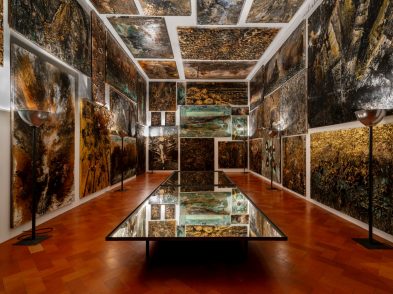November 4, 2022 marks the 56th anniversary of the severe flood that saturated the city in 1966. Decades after the event, its continued presence in Florentine memory has evolved into artistic creations made from the irreparable artifacts washed up in the city. Referred to as a “Modern Mud Angel”, in reference to the volunteers who worked tirelessly to save artistic treasures from ruin, the former Irish model Jean O’Reilly Barlow takes lost church artifacts saved from the 1966 flood of Florence and transforms them into sculptural works of art with the Florence Fragment Collection, embodying a message of What was weathered and worn is now reimagined and reborn. What was lost is now found.
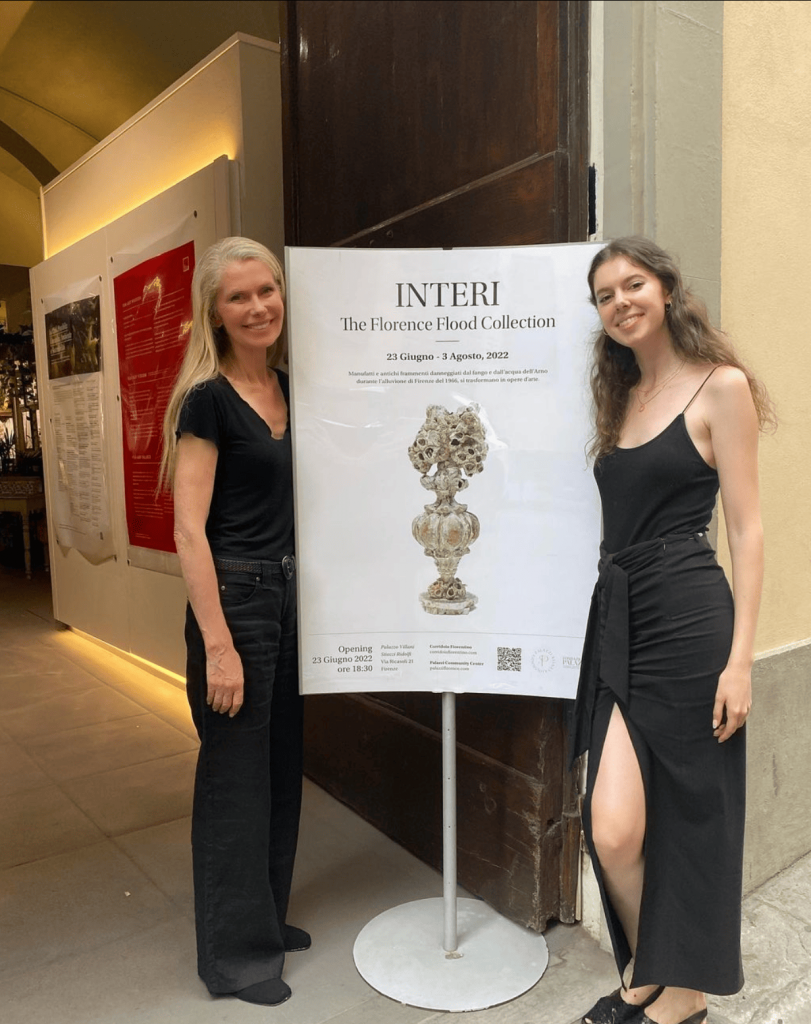
Her Florence Fragment Collection was on display this summer at the Corridoio Fiorentino Gallery, where visitors could admire the 17th- and 18th-century ecclesiastical relics that are transformed by natural specimens from all over the world, giving new life to the heavily damaged items. Speaking with the artist and her daughter/colleague Grace Barlow, Jean’s passion for what she does is immediately obvious. Grace tells us, “She gets so caught up in her work. That’s the great thing about artists; they love what they do. She would be working long hours in 36-degree heat and I’d see her dedication and it’s why I’m working with her now.”
Moving between Ireland, America and Italy, the journey that brought Jean to create the pieces is an intriguing one. “My business partner at the time was a church broker, who would receive calls, saying, Come now, we’ve just done a clean. If you don’t come, we have to burn everything. He would give them an offering and I would take the small artifacts, while he took the large architectural pieces. The pieces were originally collected at the time of the flood by a particularly wealthy Florentine man who took notice of the church artwork and decorative pieces floating through the streets. After the flood, he and his helpers began to collect as many gilded antiquities as they could. He stored the pieces in his palazzo and it remained completely closed for about 30 years. I had an English friend in Lucca who acquired these pieces, and they were largely purchased by myself and an artist from Livorno, who were the only ones who created bigger sculptural pieces from these artifacts, as far as we are aware. I went back to America and there was a rock shop where we lived at the base of the Great Smoky Mountains. We would walk down there and match things up. Given my association with Sotheby’s, my friends in antiques in Atlanta would ask to see the pieces that I’d put together and I began selling them at a huge fair there. That was the beginning of the story and they’ve been a success ever since.”
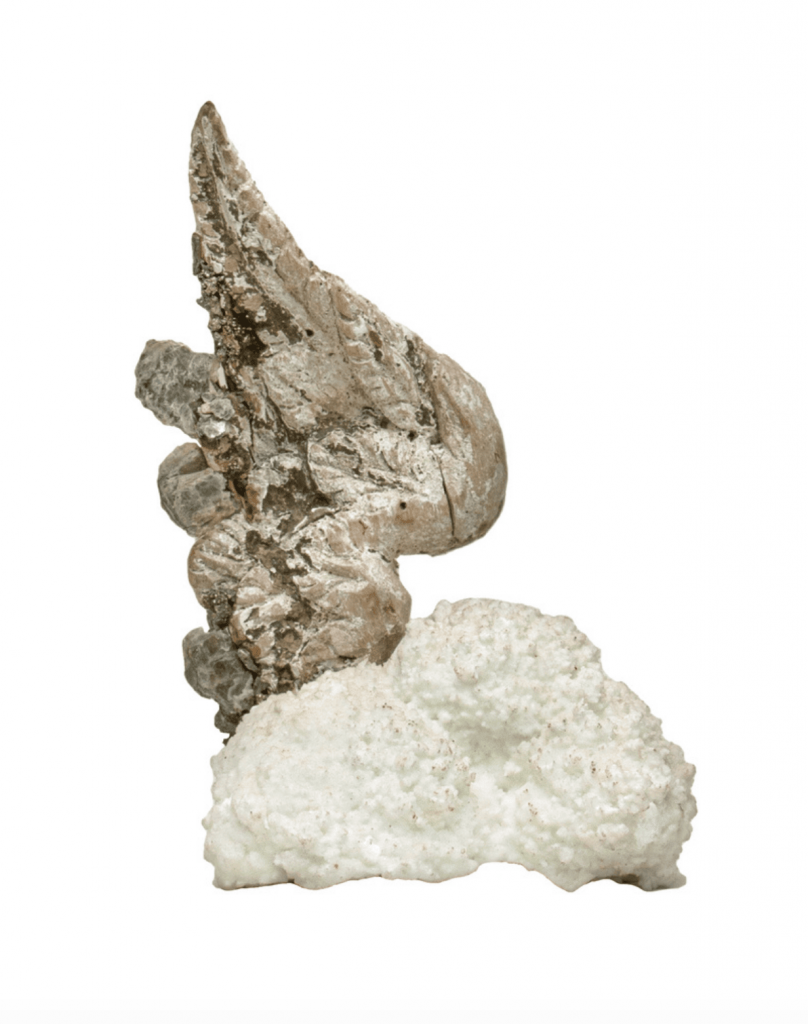


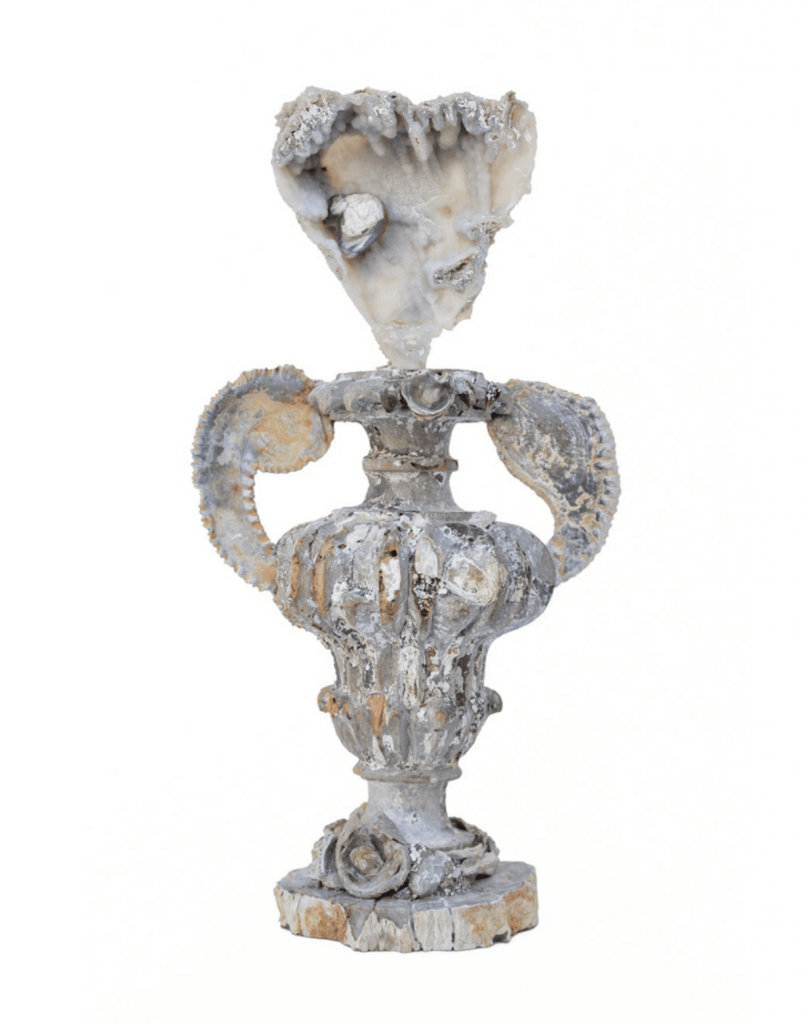
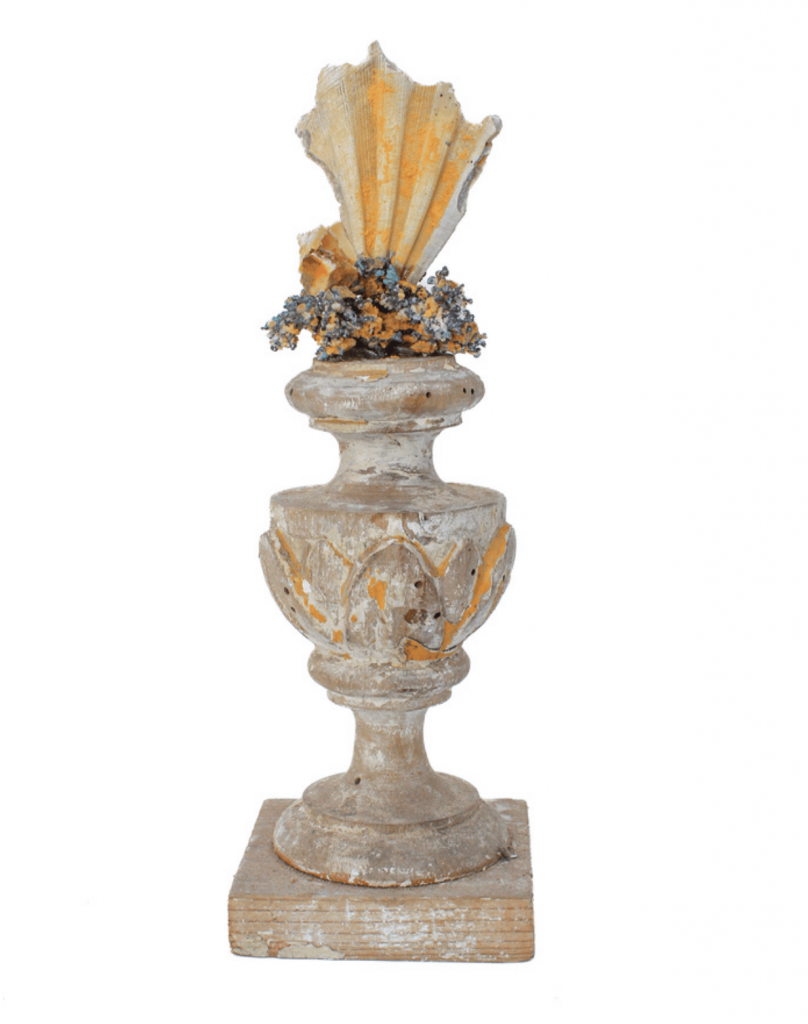
The work of the Mud Angels greatly inspires the artistic output. “It’s a story that testifies to community effort. There were international volunteers involved who came to help save a lot of the artworks and the precious history. These pieces were beyond restoration and would not be on display if there weren’t artists to give new life to them. When I would open up the trunks of artifacts there was a very specific kind of smell. The mud was made up of silt and oil that had gotten mixed with the water, creating a kind of adhesive to the pieces. I used them as I found them, just giving a cosmetic touch, with the mud and everything still on them. The wood is still soft because it’s totally rotten. I would think of a mineral, precious gem or shell to add to the piece and how to apply it, so that it looked like they blended together and have evolved together over time.”
Baroque pearls, fossil agate coral and selenite glitter from the relics. Whether the artifacts are ornate with a Chalcedony rosette or a crystal from Brazil, how they transform a still-evident piece of plaster or fleck of yellow paint is remarkable, creating a contemporary and eclectic item with everything having come from the earth, in one way or another.
Aligning with the artist’s mission of taking something of beauty that has undergone a lot of wear and tear in order to make it more beautiful than before, 10 per cent of proceeds from purchases go towards anti-trafficking organizations, with both of Jean’s daughters involved in the charity.
The name Interi is particularly significant, given its multiple meanings. Grace elaborates, “The reason why she picked the name originally is because in a lot of different languages it means interior; the first five letters are interi. It fits so perfectly with the works because interi means whole, and it’s so beautiful thinking about these historic and significant pieces that are now whole again”. Jean adds, “I’m looking for a permanent home for them in Florence. They are part of Florentine heritage,” seeking to bring them back to where they were lost, so they can once again form part of the rich cultural fabric of the city.
Article updated November 4, 2022



